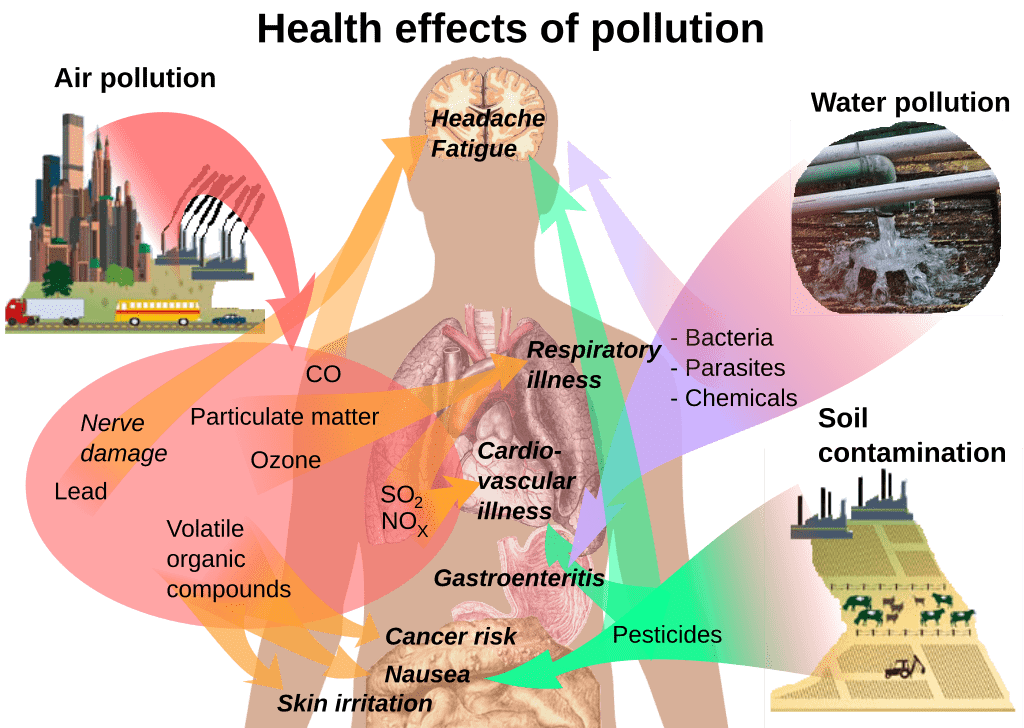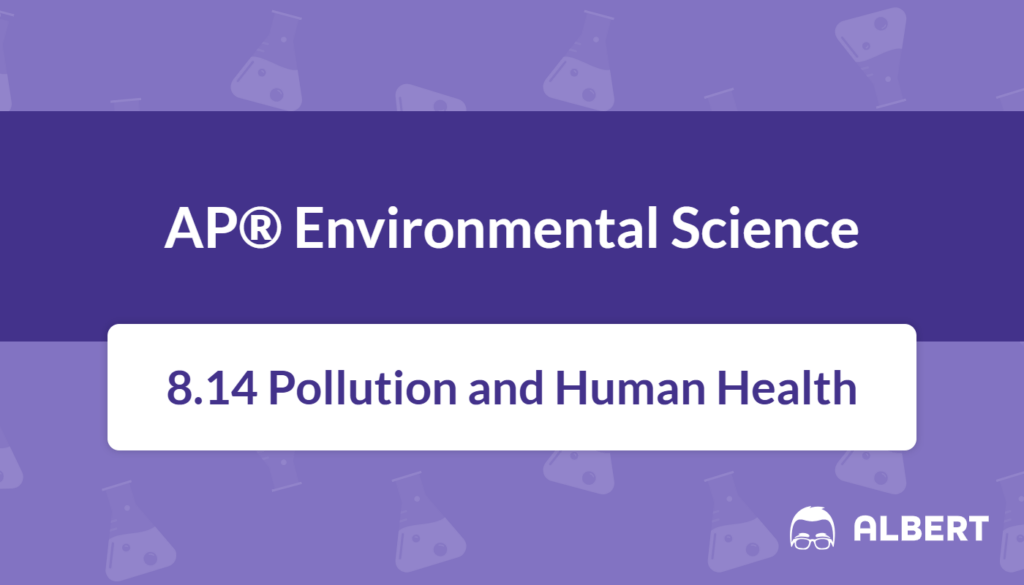What We Review
Introduction
Pollution remains a central topic because it significantly influences human well‑being. Various pollutants—ranging from industrial chemicals in water to particulate matter in air—threaten public health. Issues related to pollution and human health are especially important, as environmental conditions can magnify or reduce health risks, yet the interplay between specific pollutants and diseases is often complex. Understanding how pollution affects the human body is vital for developing effective mitigation strategies.
In many cases, pinpointing a direct cause among multiple pollutants is challenging. For instance, the presence of both chemical runoff and airborne contaminants can complicate scientific efforts to identify which pollutant triggers a specific illness. Nevertheless, researchers agree that reducing overall pollution in air, water, and soil is key to improving human health. Therefore, knowing how common pollutants enter the environment and affect the body is essential for AP® Environmental Science students.
Understanding Pollution
Pollution occurs when harmful substances or energies are introduced into the environment. While some pollution occurs naturally—for example, volcanic ash—most of the contaminants affecting human health originate from human activities. Industrial production, transportation, and waste disposal each contribute to environmental imbalances that can lead to disease.
Types of Pollution
- Air Pollution
- Air pollution includes gases and particles released by vehicles, power plants, and industrial facilities. Over time, these substances accumulate and can harm respiratory health.
- Water Pollution
- Water pollution refers to contaminants entering streams, rivers, lakes, and oceans. Untreated sewage and industrial chemicals are prime examples of dangerous water pollutants.
- Soil Pollution
- Soil pollution typically happens when waste, pesticides, or heavy metals mix with the ground, destroying soil quality. This can also lead to unsafe food when crops absorb toxic substances.
Common Sources of Pollution
- Industrial Waste: Factories often emit harmful byproducts that enter air or water without adequate treatment.
- Vehicle Emissions: Cars, trucks, and buses produce exhaust containing carbon monoxide, nitrogen oxides, and other pollutants.
- Household Disposal: Unregulated dumping of chemicals, such as cleaning products or paints, can leach into soil and groundwater.
One way to measure pollution is by assessing a specific contaminant’s concentration. For instance, concentration can be calculated using the formula
C = \frac{m}{V},where m is the mass of the pollutant, and V is the volume of the medium (like water or air) being examined. This calculation helps scientists determine when pollution levels exceed safety thresholds.
The Connection Between Pollution and Human Health
Pollutants can affect different body systems, including respiratory, digestive, and immune systems. When hazardous materials enter the human body through inhalation, ingestion, or skin contact, they may cause immediate or long‑term damage. However, establishing a direct link between a single pollutant and a specific disease can be difficult because humans encounter a variety of chemicals daily. Multiple exposures—combined with factors like genetics and lifestyle—make it hard to determine which pollutant causes a particular illness.
Still, broad patterns have emerged. Populations living near industrial zones or congested highways often experience higher rates of respiratory ailments. In other regions, waterborne diseases become prevalent when sewage treatment is inadequate. Therefore, although it may be challenging to point to one pollutant as the sole culprit, reducing all major sources can significantly lower health risks overall.

Water Pollution and Health Issues
Water pollution remains a leading contributor to global health problems. A notable example is dysentery, an illness often traced to microorganisms thriving in water contaminated by human waste. When untreated sewage enters rivers and other water bodies, pathogenic bacteria and protozoa multiply, especially in warm conditions.
Dysentery and Its Process
- Contamination: Human waste or sewage carrying pathogenic organisms seeps into streams or rivers.
- Growth of Pathogens: These pathogens then grow in the contaminated water supply.
- Human Consumption: Individuals drink or use the unclean water for cooking or washing.
- Infection: Pathogens invade the digestive system, causing abdominal pain, dehydration, and diarrhea.
Dysentery highlights how essential proper sewage treatment is for preventing disease. Filtration and disinfection techniques—such as chlorination—can destroy pathogens before they reach human populations. However, many communities worldwide lack the resources or infrastructure to implement these methods effectively. Therefore, international policies focusing on clean water initiatives are vital for protecting people from waterborne diseases.
Air Pollution and Health Problems
Air pollution is also a significant threat to public health. Among its many forms, tropospheric ozone stands out for its impact on respiratory issues. This ozone layer forms close to the ground, unlike stratospheric ozone, which protects Earth from ultraviolet rays.
Tropospheric Ozone Formation and Effects
- Emission of Precursors: Cars and industrial sources release nitrogen oxides (NOₓ) and volatile organic compounds (VOCs).
- Chemical Reactions: Under sunlight, these NOₓ and VOCs react to form ozone (O₃) in the lower atmosphere.
- Buildup of Ozone: High concentrations of ozone irritate the lining of the respiratory tract.
- Health Impact: Individuals experiencing elevated ozone levels may develop coughing, throat irritation, or reduced lung function.
Respiratory problems associated with tropospheric ozone include increased asthma attacks and overall difficulty in breathing. Vulnerable groups, including the elderly and children, are especially prone to ozone‑related harms. Therefore, limiting vehicle emissions, improving public transportation, and adopting cleaner industrial practices can help reduce ozone formation in affected regions.
Hazardous Waste and Cancer
In addition to short‑term ailments like dysentery or respiratory infections, certain pollutants have more severe long‑term consequences. Hazardous waste sites can contain materials that increase cancer risk. Mesothelioma exemplifies one such cancer, mainly linked to asbestos exposure.
Asbestos and Mesothelioma
Asbestos is a mineral fiber historically used in construction for fireproofing and insulation. However, its fibers can become airborne during construction or demolition. The fibers then lodge in lung tissue when inhaled. Over time, these embedded fibers can lead to inflammation and genetic damage, culminating in mesothelioma decades after exposure.
- Contact with Asbestos: Construction workers, particularly those renovating older buildings, encounter asbestos fibers.
- Inhalation of Fibers: Tiny fibers enter the body through the respiratory system.
- Accumulation in Lungs: The immune system struggles to break down the fibers, and scar tissue forms.
- Disease Onset: Cancerous cells develop, often many years after the initial exposure.
Since asbestos is now regulated in many countries, newer construction avoids its use. Nevertheless, older buildings still pose a risk if asbestos is disturbed without proper safety measures. Next, implementing strict remediation guidelines and safety training can help protect workers from exposure.
Preventative Measures and Solutions
Effective pollution reduction strategies can improve public health at various scales—personal, community, and policy levels. Recognizing how pollution spreads opens the door to targeted interventions.
Personal Actions
- Use Public Transportation: Biking, walking, or carpooling reduces the number of cars on the road, lowering tropospheric ozone formation.
- Conserve Water: Fixing leaks and using water‑efficient appliances helps reduce the volume of wastewater that flows into treatment facilities and local waterways.
- Dispose of Hazardous Materials Properly: Used motor oil, paint, and cleaning chemicals require special handling to avoid contaminating soil and water.
Community and Policy‑Level Actions
- Clean Water Initiatives: Local governments can invest in better sewage treatment systems to reduce waterborne diseases.
- Air Quality Standards: Government agencies can enforce regulations that limit vehicle emissions and industrial pollutants.
- Hazardous Waste Management: Establishing strict guidelines and ample funding for waste disposal minimizes exposure risks.
- Public Education Campaigns: Workshops and school programs keep community members informed about the dangers of pollution and methods to protect themselves.
Implementing these measures often requires collaboration between citizens, businesses, and policymakers. Sharing information about local pollutant levels, discussing scientific findings, and creating transparency around enforcement can strengthen public engagement.
Conclusion
Pollution poses a persistent challenge in many communities around the globe. Air pollution contributes to respiratory ailments, water pollution leads to diseases like dysentery, and hazardous waste dumps can cause serious conditions such as mesothelioma. Although establishing a single cause‑and‑effect link can be complicated, mitigating all forms of pollution reduces the overall health burden.
Understanding how contaminants enter and move through ecosystems forms the foundation of public health improvements. Research continues to strengthen society’s grasp of pollution’s varied impacts. Therefore, continued awareness, activism, and education will help ensure a healthier future.
Important Vocabulary
- Dysentery: A disease causing inflammation of the intestines, often linked to contaminated water by untreated sewage.
- Mesothelioma: A type of cancer primarily associated with asbestos exposure, affecting the lining of the lungs.
- Tropospheric Ozone: A ground‑level pollutant formed by reactions between nitrogen oxides and volatile organic compounds under sunlight.
- Asbestos: A group of mineral fibers once used in construction, now known to increase cancer risk when fibers are inhaled.
- Pollutant: Any substance or energy introduced into the environment that is harmful to living organisms.
Sharpen Your Skills for AP® Environmental Science
Are you preparing for the AP® Environmental Science test? We’ve got you covered! Try our review articles designed to help you confidently tackle real-world AP® Environmental Science problems. You’ll find everything you need to succeed, from quick tips to detailed strategies. Start exploring now!
- AP® Environmental Science: 8.11 Review
- AP® Environmental Science: 8.12 Review
- AP® Environmental Science: 8.13 Review
Need help preparing for your AP® Environmental Science exam?
Albert has hundreds of AP® Environmental Science practice questions, free response, and full-length practice tests to try out.








